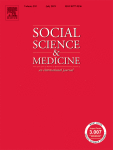
Abstract
Rationale
The Netflix show 13 Reasons Why (2017) aroused widespread concern regarding potential contagious effects of its graphic depiction of an adolescent girl’s suicide and the events that led to her death.
Objective
To explore the effects of the second season of the show in 2018.
Method
We recruited a sample of young adults (ages 18–29; N = 729) with access to Netflix who completed surveys shortly before and one month after the release of the show’s second season. Based on theories of narrative empathy, we hypothesized that those who discontinued watching the show would be most vulnerable to its adverse effects on suicide-relevant outcomes. We further identified a higher risk subset of viewers who were more likely to have stopped watching the first season (those currently enrolled in school) in order to observe if the show had more adverse effects on this audience. Finally, we examined effects of the show on all viewers’ intentions to help a suicidal person as a prosocial consequence of viewing the entire second season. We used both covariance and “genetic” matching to control for selection effects.
Results
In support of predictions, viewers who stopped watching the second season exhibited greater suicide risk and less optimism about the future than those who continued to the end. However, unexpectedly, current students who watched the entire second season reported declines in suicide ideation and self-harm relative to those who did not watch the show at all (ps < .01). Moreover, those who watched the entire second season were also more likely to express interest in helping a suicidal person, especially compared to those who stopped watching.
Conclusion
The results suggest that a fictional story with a focus on suicidal content can have both harmful and helpful effects.
Authors
- Florian Arendt
- Sebastian Scherr
- Josh Pasek
- Patrick E. Jamieson
- Daniel Romer

